I drew a late-season cow elk tag here in Sunlight Basin, a mountain region in Wyoming with various trailhead options. My husband grew up hunting in this area, and we spend our summers fishing, camping and four-wheeling here. I started my hunt after the season had opened because I was still trying to fill my archery deer tag, so I knew the animals we were pursuing had been pushed for at least a week prior to our arrival. We had the time in our schedule to go during the work week and stay in a family cabin for several days, and I was hoping that would help us re-level the playing field with the other hunters. I also have a permit that allows me to shoot from a vehicle if needed, so we loaded up my Action Track Chair and a Remington 700 .30/06 and headed for the mountains.
Redefining Life is sponsored by Mace Brand
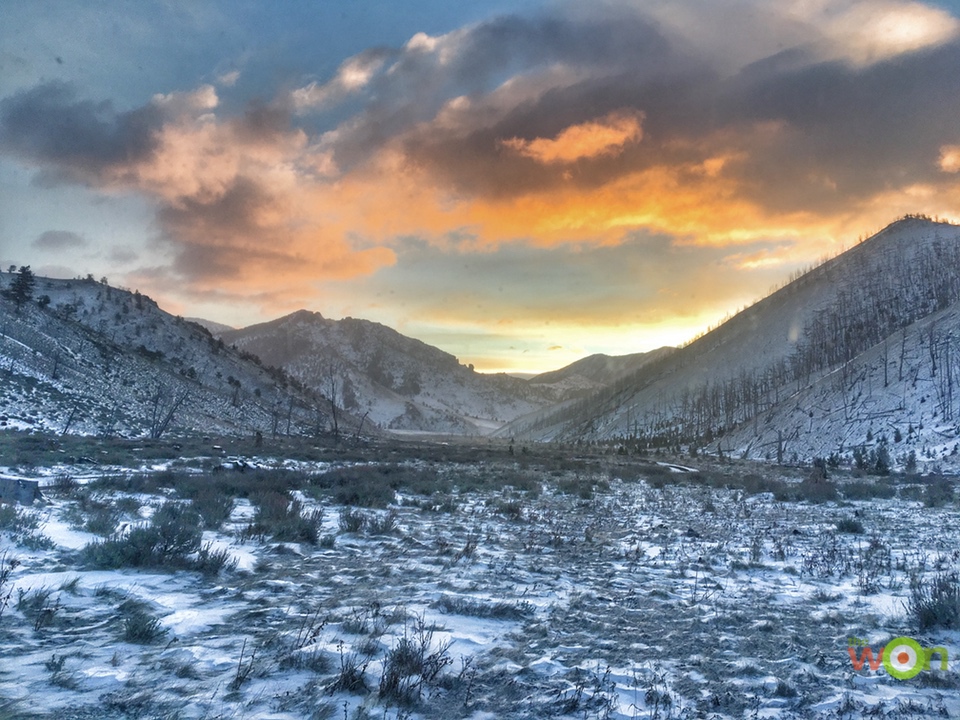
Nothing prettier than a sunrise in the mountains before a morning hunt.
Russ and I left the cabin early on a Monday morning after a fresh snow. Right away we started seeing animal tracks, including wolf, mountain lion and bear. We had been hoping that the bears would already be hibernating by the time our early December trek started, but the tracks were a good reminder that there was at least one bear still out there, looking to fill his belly before a long winter slumber. Fortunately, we also spotted elk tracks—and from the torn-up ground, it looked to be a sizeable herd. As we continued up a mountain pass, we spotted a group of a dozen or more cows crossing the trail and heading up the side of a hill. It wasn’t quite legal shooting light yet, so we turned the truck off and decided to wait and see what they would do. The herd kept moving until they were nearly 400 yards up, near the timber line. I set up the rifle and watched through my scope, knowing that my firearm wasn’t set up for any shots past 300 yards—and even that would have to be in nearly perfect conditions. We waited for over an hour and watched the last cow go into the trees before deciding to head back to the cabin for lunch.
Over the next several days we continued to see elk, but they were either bedded on a small patch of private ground or well out of range of my rifle. We covered a lot of ground in the truck, and spent hours glassing for animals. Each day brought a new experience. I was getting impatient, but I also understood that while I was doing everything I could to be successful, hunting is often a matter of being lucky enough to be at the right place at exactly the right time. And I wasn’t getting lucky.
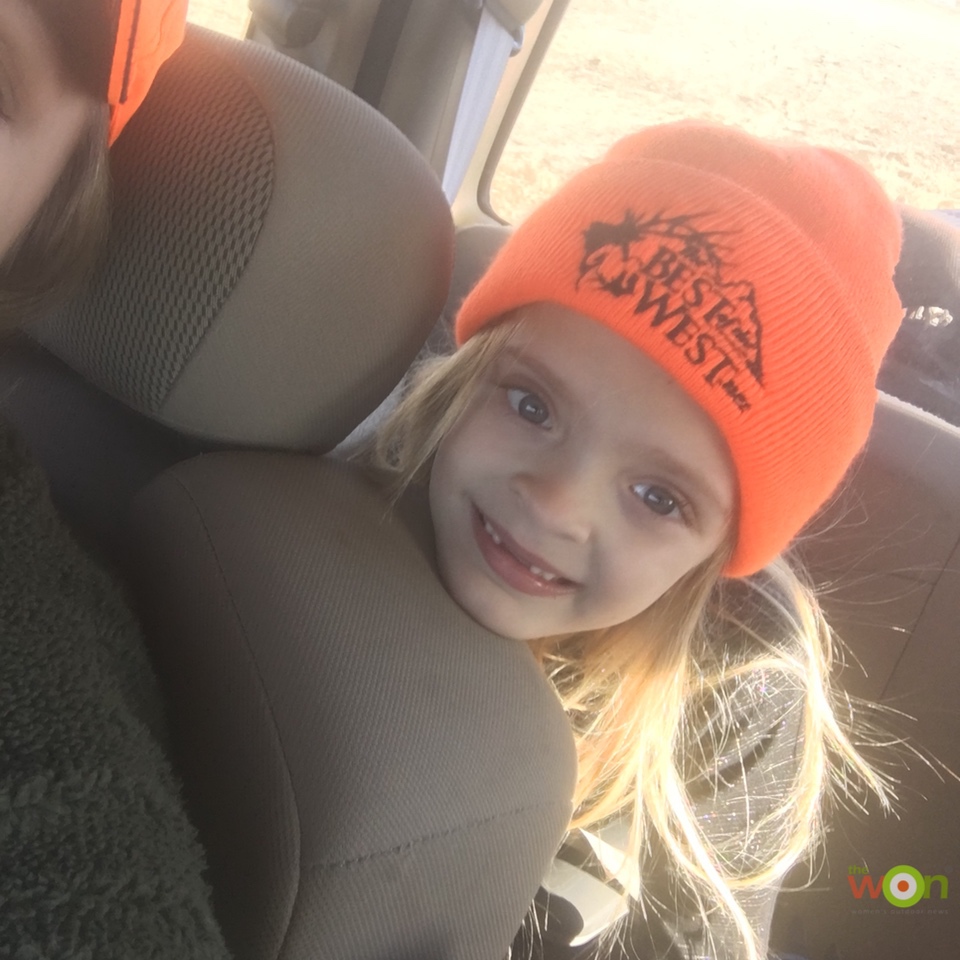
Little hunter in training
We followed a routine for nearly two weeks: Get up early and try to be one of the first trucks up the mountain, or head out in the early afternoon for an evening hunt. Our 7-year-old daughter, Addison, went with us most mornings and loved seeing all the wildlife. We saw elk nearly every day, but it was always the same story: They were safe on private land or too far out of range. The end of my season was fast approaching, and with an empty freezer looming in my mind, I decided it was time to pull out the big guns. Literally.
For 99 percent of my life, I am perfectly content to adventure from my wheelchair. After more than 18 years of learning to adapt, I honestly love my life and wouldn’t change my physical condition. But every once in a while, the truth of my limitations smacks me in the face in a way that I can’t ignore. This was one of those times. I wanted so badly to shoulder my pack and hike up into the mountains to pursue these amazing animals. I wanted to feel my calves cramp and my lungs burn as I climbed through the cold, high-altitude air. But then reality shook me hard, and I looked at my options. Knowing that I needed to work with what I had, I reached out to a family member who had previously offered me the use of his custom-built 6mm rifle, complete with a Nightforce long-distance scope. This rifle weighs 14 pounds, which is perfect for me, because I wouldn’t be walking around holding it, and its heft would provide an incredibly sturdy base and would reduce any felt recoil. I didn’t know if I would need to take a shot at a longer distance, but I wanted to have it just in case.
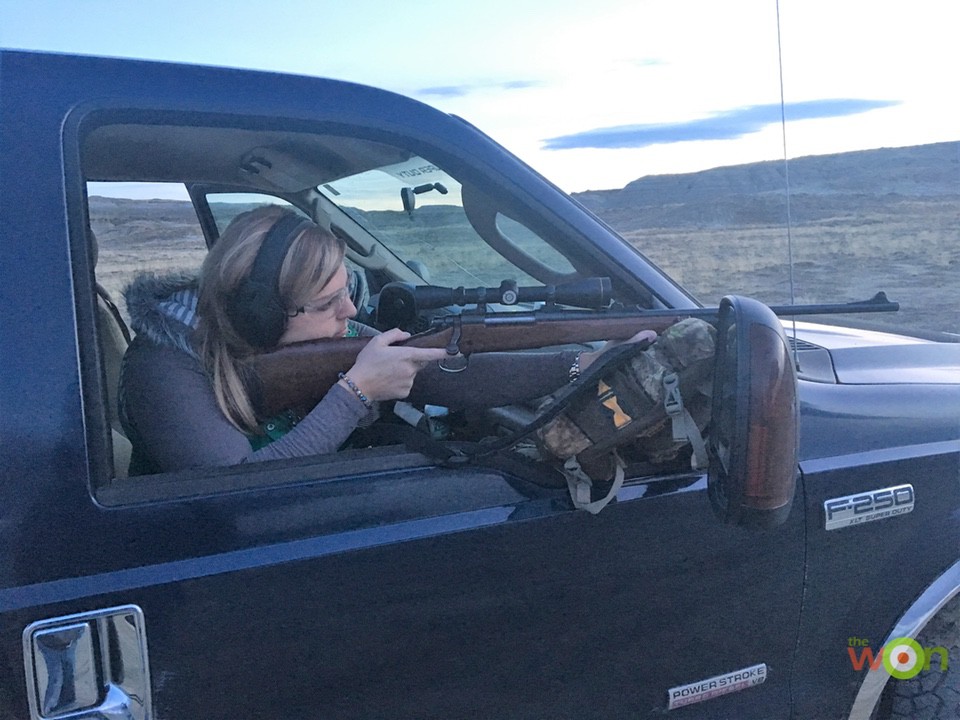
Making sure the rifle is ready for the upcoming hunt.
The next morning, we left early and headed up the now-familiar trail. Several trucks were parked near the private ranch, hoping to catch a cow crossing into public land. We’d seen a small herd in another area the day before, so we waved at the hunters and continued past them up the gravel road. Time was getting short, and I was feeling the pressure to fill my tag. We ended up on the trail where we had started our hunt several weeks before on that cold, snowy morning, and, crazily enough, there in front of us was a small herd of elk. Russ turned the truck and shut it off as I lowered my window and slowly eased the rifle out to rest on my pack, wedged against the side mirror. As Russ called out yardages to me, something didn’t feel right. It looked like the elk were much closer than the numbers I was hearing. But Russ continued to get the same yardage several times in a row, so I adjusted the scope, placed the crosshairs right behind the shoulder of a mature cow, and gently squeezed the trigger. I saw her flinch and thought it was a solid hit—until I looked up and realized that she hadn’t dropped, but was instead limping away from the scattering herd. My stomach plummeted as I realized that the shot had been right on target, but about 18 inches too low.
I’ve never been good at estimating distance, so I always make sure we have our range finder with us and that the battery is always fully charged. I don’t know if it was the cold or just a malfunction, but looking back, I believe that cow was about 200 yards closer than the range finder was reading. In the moment I didn’t have time to analyze the mistake; I knew I had to get a second shot in the elk before she got to a place where I couldn’t physically follow her. Russ has a companion hunter permit for these situations if needed, but we have never needed to use it and I wanted to finish this hunt on my own. We fired up the truck and took off down the trail, trying to get parallel with the cow so I could get another shot. Thankfully, she started up a hill that slowed her down, and I was able to quickly fire again at a short enough distance that the faulty range finder wasn’t an issue. She didn’t go 10 yards before piling up.
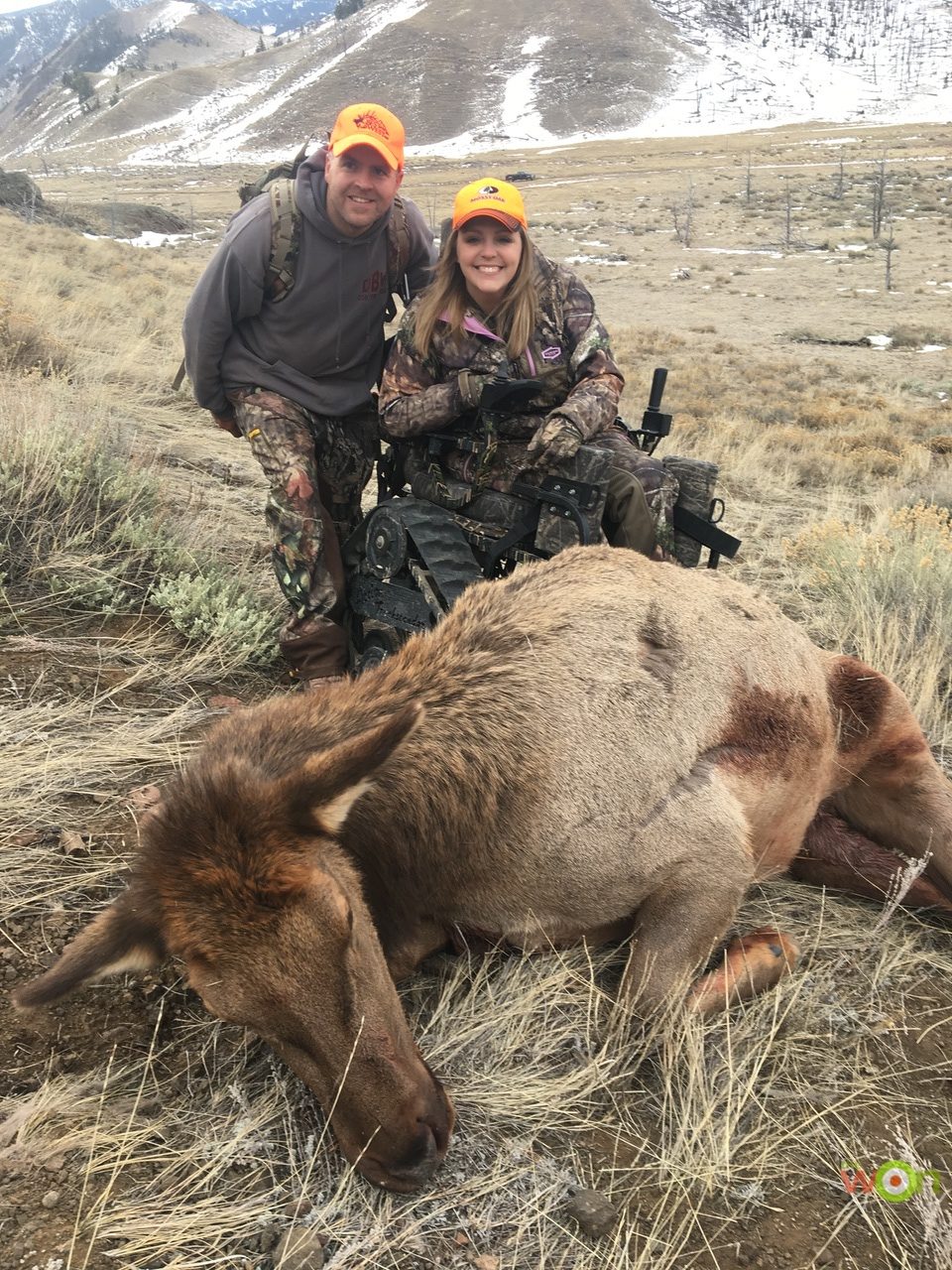
My favorite hunting buddy is my husband, Russ.
I learn something new every time I hunt, and this adventure was no different. Technology has certainly changed the game when it comes to pursuing animals, but at the end of the day, it can never replace your gut instincts. The dichotomy of this instance was no different: A custom rifle made this hunt successful, while a range finder almost ruined it. At the end of the day, I am thankful for our now-full freezer, as well as the lessons that will continue to make me a better hunter.
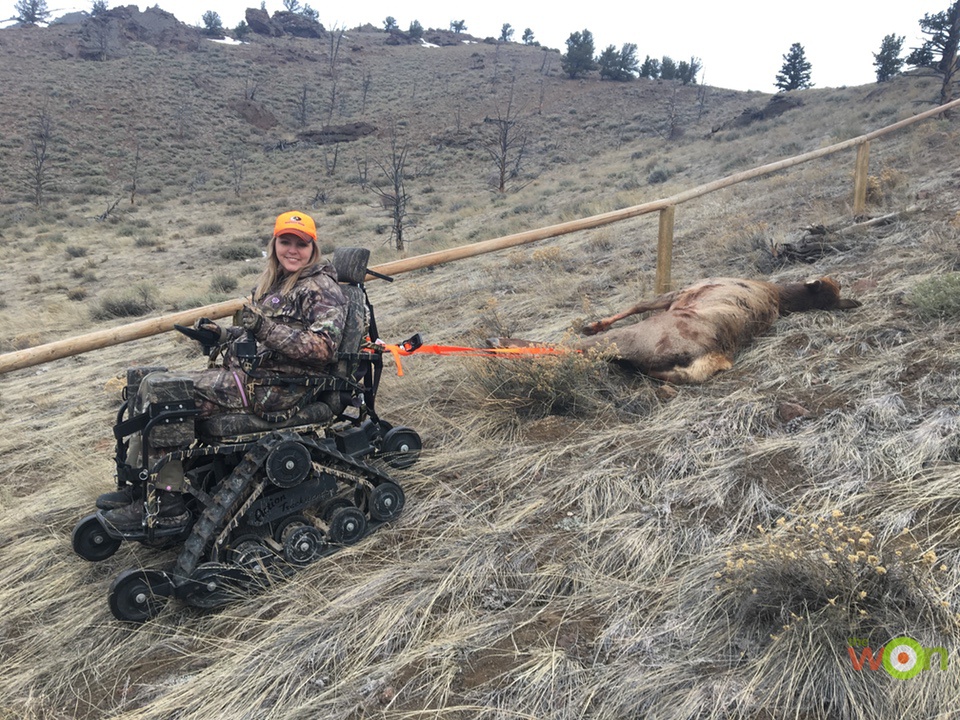
My Action Track Chair allows me to be incredibly independent—even hauling a cow elk all the way back to the truck!
Ashlee Lundvall writes a blog titled "Redefining Life," that follows her rise from a debilitating injury as a teenager to Ms. Wheelchair USA in 2013. Her first book, "A Redefined Life," was published in February of 2016, and she is on National Pro Staff for Mossy Oak and the NRA’s Disabled Shooting Sports committee. Ashlee is also the recipient of the 2017 SCI Foundation Pathfinder Award. Ashlee truly shines as a keynote speaker at outdoor industry and disability related events and conferences. She is passionate about mentoring newly injured patients, and loves to pass on her love for adapted outdoor recreation! View all posts by Ashlee Lundvall